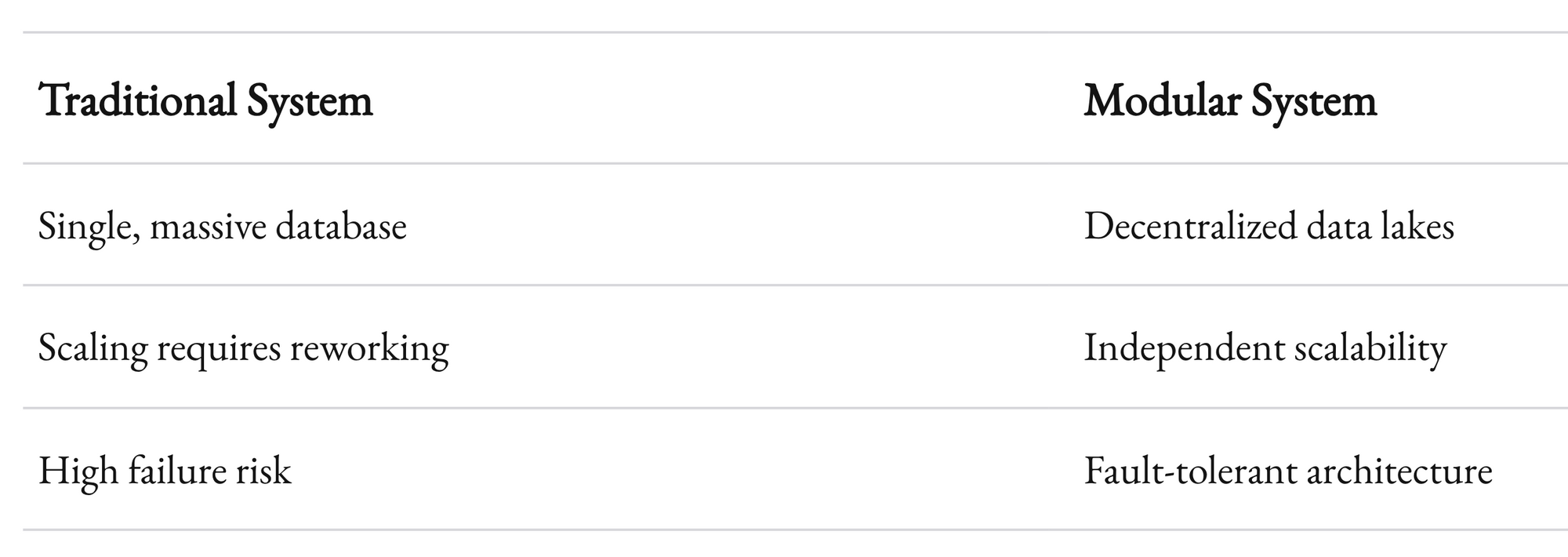How Do We Implement Effective Data Management as Our User Base Grows?
Is your data strategy ready to scale? Discover how to streamline, secure, and supercharge your data management.

A growing user base can dramatically accelerate your business success. However, this exciting growth brings new challenges in managing your expanding operations. You'll have more data to process, more user interactions to track, and what used to be straightforward insights become harder to interpret. Strong data management becomes essential for maintaining your efficiency, market position, and focus on user needs.
At 1985, we partner with businesses of all sizes who share a common challenge: keeping their data organized and useful as they scale. We've developed deep expertise in implementing effective data management strategies that grow alongside your user base. Our approach combines rigorous technical principles with creative problem-solving to help you succeed.

Start With a Data Strategy
A plan beats chaos every time. Without a clear data strategy, you’re flying blind. Many companies think they’ll "figure it out" as they scale. Bad idea. As your user base grows, so does the volume, variety, and velocity of your data. You need a clear roadmap to keep things under control.

Align Data Goals With Business Objectives
Your data management strategy isn’t a standalone project. It’s a cog in your larger business machine. Ask yourself:
- What are the key outcomes we’re driving? Better personalization? Faster issue resolution?
- Which datasets are critical to these outcomes? For example, customer support logs, app usage data, or billing histories?
Use these answers to narrow your focus. According to Gartner, 87% of organizations struggle with low data maturity, often because they lack alignment between data and business priorities. Don’t let that be you.
Create a Data Inventory
You can’t manage what you don’t know. Start by cataloging all the data sources your company relies on. This includes:
- First-party data from your apps or platforms
- Third-party integrations
- User-generated content (e.g., reviews or support tickets)
Build a live document or dashboard to keep this inventory up-to-date. It’s tedious, sure. But it’ll save you from duplicating efforts or losing track of key data streams.

Prioritize Data Quality Over Quantity
Here’s a hard truth: more data doesn’t always mean better decisions. In fact, dirty data costs businesses an estimated $13 million annually, according to IBM. That’s not a small number.
Focus on Clean Data
Data hygiene matters. Duplicate entries, missing fields, or outdated information can wreak havoc on your insights. Invest in tools that:
- Automate deduplication
- Validate entries at the point of capture
- Regularly audit and cleanse existing datasets
For example, if you’re managing user sign-ups, ensure email validation is baked into your process. Tools like Clearbit or DataValidation can streamline this.
Standardize Formats
Think of data as a language. If your team speaks in different dialects—or worse, different languages entirely—you’re heading for miscommunication. Standardize:
- Naming conventions (e.g., “Customer_ID” vs. “User_ID”)
- Date formats
- Units of measurement
This reduces friction when merging or analyzing datasets across systems.

Scale Your Infrastructure Smartly
Your tech stack can be your best friend or your biggest bottleneck. As user numbers climb, so do the demands on your data systems.
Use a Modular Architecture
A monolithic data system might work for a while. But as your user base expands, it becomes a house of cards. Modular architectures—built on microservices or data lakes—scale more gracefully.
For example:

AWS’s S3 or Google’s BigQuery can be excellent starting points for scaling modularly.
Don’t Skimp on Indexing and Partitioning
As data grows, so does query time. Indexing and partitioning optimize retrieval, preventing your systems from grinding to a halt.
A case study from Uber shows how they optimized their real-time analytics using Apache Hudi to partition data by region and event type. The result? Processing speed improved by 50%.

Maintain Security and Compliance
More users mean more responsibility. Mishandling data isn’t just bad PR; it’s a business killer. Data breaches cost companies $4.45 million on average in 2023, per IBM.

Encrypt Everything
Encryption isn’t optional. Whether it’s at rest or in transit, data needs to be locked down. Tools like TLS, AES-256, and HTTPS should be non-negotiable in your stack.
Implement Role-Based Access Control (RBAC)
Not everyone needs access to everything. Set granular permissions. For example:
- Customer support reps only see user tickets, not billing details.
- Data scientists access anonymized datasets by default.
Platforms like Okta or Auth0 can help you enforce these policies without adding too much friction.
Stay Ahead of Regulations
Compliance isn’t a set-it-and-forget-it deal. Laws like GDPR, CCPA, or India’s PDP Bill evolve constantly. Assign someone (or a team) to monitor updates and adapt your practices. Non-compliance penalties can cripple startups and established companies alike.

Analyze Proactively, Not Reactively
Data management isn’t just about storage. It’s about turning raw numbers into meaningful insights—before your competitors do.

Build Real-Time Dashboards
The faster you can interpret data, the quicker you can act. Real-time dashboards help you:
- Monitor key performance indicators (KPIs)
- Detect anomalies (e.g., a sudden spike in failed logins)
- Track user behavior trends
Tools like Tableau, Looker, or even Google Data Studio can get you started. Just don’t drown in vanity metrics. Focus on KPIs that directly drive your goals.
Experiment and Iterate
Scaling isn’t just about serving more users; it’s about serving them better. Use your data to test:
- New features
- Onboarding flows
- Pricing models
For instance, Airbnb runs thousands of A/B tests daily to optimize user experience and bookings. Small tweaks often lead to huge payoffs.
Empower Teams With the Right Tools
Technology alone doesn’t solve problems. People do. Equip your teams to make the most of your data.
Democratize Data Access
Create a culture where data isn’t locked in silos. Use tools that allow non-technical teams to access and interpret data without SQL expertise. Think:
- Airtable for light-weight database management
- Zapier for automating workflows
- Metabase for user-friendly analytics
Train and Upskill
Even the best tools fall flat without skilled operators. Invest in ongoing education for your team. Workshops, certifications, and internal knowledge-sharing can make a huge difference.
Effective data management isn’t a one-and-done task. It’s a living, breathing process that evolves as your business grows. By aligning data with business goals, prioritizing quality, scaling smartly, safeguarding security, and empowering teams, you’ll not only survive growth—you’ll thrive.
At 1985, we’ve seen firsthand how businesses can transform when they treat data as a strategic asset rather than a backend chore. The results? Faster decisions, happier users, and a competitive edge that’s hard to beat.



